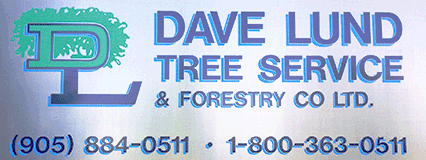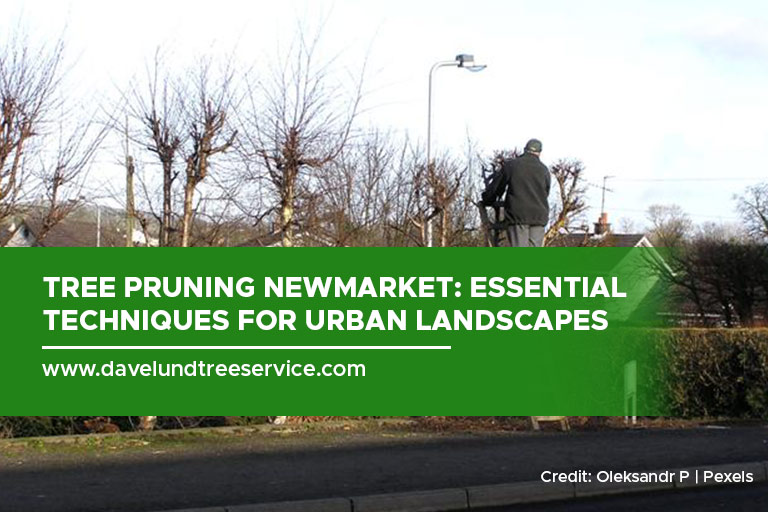Nestled amidst bustling streets and charming neighbourhoods, Newmarket’s urban landscape thrives thanks in part to its vibrant tree population. These leafy giants provide shade, beauty, and environmental benefits, but to ensure their health and safety, proper pruning is essential.
To help you know when and how to prune your trees and ensure their good health, this guide has the knowledge and techniques to teach you how to do that, and let you enjoy your trees that much longer.
Understanding Why We Prune
Proper tree pruning is more than just trimming branches for aesthetics. It’s also a crucial practice that benefits both the tree and its surroundings. Some key reasons to prune at the right times include:
Improved Health
Pruning removes dead, diseased, or damaged branches. These compromised areas act as entry points for pests and diseases, and their removal encourages healthy new growth. Additionally, by thinning crowded branches, pruning improves air circulation and light penetration within the canopy, further promoting a healthy tree.
Enhanced Safety
Overgrown or weak branches pose a significant risk of falling and causing damage to property or injuring people. Pruning mitigates these risks by removing hazardous branches and promoting a strong, balanced crown structure.
Increased Property Value
Well-maintained trees with a manicured appearance also enhance the curb appeal of your property, potentially increasing its value in case selling it becomes an option.
Managing Tree Size and Shape
Urban environments often have limited space. Pruning techniques like crown reduction and crown raising can help control a tree’s size and ensure it doesn’t interfere with power lines, buildings, or walkways.
Essential Pruning Techniques
Now that we understand the benefits of pruning, let’s delve into some essential techniques you can employ for your Newmarket trees.

1. The Right Tools for the Job
Having the proper equipment ensures clean cuts, minimizes damage to the tree, and promotes safety. Here’s a basic toolkit for homeowner pruning:
Hand Pruners
Ideal for branches less than 3 centimetres in diameter. Opt for bypass pruners for clean cuts on live branches and anvil pruners for thicker, dead branches.
Loppers
These long-handled pruners provide leverage for cutting branches up to 5 centimetres thick.
Pruning Saw
For larger branches beyond the capacity of loppers, a pruning saw with a sharp blade is essential. Invest in a quality pruning saw to ensure you can take off those smaller branches safely and effectively.
Safety Gear
Always prioritize safety. Wear gloves with good grip, eye protection to guard against falling debris, and long pants and sleeves to protect your limbs.
2. When to Prune
The ideal pruning time depends on the tree species and purpose of the pruning. Here’s a general guideline:
Dormant Season
For most trees in Newmarket, late winter (between late February and early April) is the preferred pruning time. At this time, a tree is dormant and resting, allowing it to focus on healing before spring growth begins.
Exceptions
Certain species, like flowering trees like crabapples, should be pruned right after flowering to avoid compromising next year’s blooms. Evergreens can be pruned throughout the year, but avoid pruning during periods of heavy sap flow.

3. Pruning with Precision
Always make clean cuts using the proper three-cut method:
The First Cut
Make an undercut about 2.5 centimetres from the branch collar (the raised area where the branch meets the trunk) on the underside of the branch. This prevents tearing of the bark when the main cut is made.
The Second Cut
Saw or clip through the branch about 2.5 centimetres beyond the first cut, completely severing the branch.
The Final Cut
Make a final cut just outside the branch collar, removing the stub left from the second cut. This cut should be angled away from the branch collar to promote proper healing.
4. Size Matters: Know Your Limits
Safely pruning trees requires good judgement. Here’s when it’s best to call in a professional arborist:
Large Branches
Branches exceeding 7 centimetres in diameter pose a higher risk of injury if not handled properly. Leave the pruning of these branches to a certified arborist with the expertise and equipment for safe removal.
Diseased or Hazardous Trees
Trees with extensive disease or structural weaknesses require special attention. An arborist can assess the situation and recommend the safest course of action.
Tall Trees
Pruning high branches on tall trees can be dangerous. Leave this task to a professional with the appropriate equipment and safety protocols.
5. Maintaining the Health of Your Pruned Tree
Proper aftercare ensures your tree recovers well from pruning. Here are some key practices:
Proper Disposal
Dispose of pruned branches responsibly. Consider chipping them for mulch or taking them to a designated green waste disposal site.
Watering
Deeply water your tree after pruning, especially during dry periods. Pruning can stress the tree, and adequate hydration promotes healing.
Fertilization
Consider fertilizing your tree after pruning, particularly if the soil is nutrient-deficient. Consult a local nursery or gardening professional for guidance on selecting the right fertilizer for your tree species and soil type.
Monitoring Progress
Keep an eye on your tree after pruning. Watch for signs of disease or insect infestation, and address any concerns promptly.
Pruning Specific Tree Types
While the general principles discussed earlier typically apply to most trees, some species enjoy greater benefits from specific pruning techniques. Some common Newmarket tree types and what they might need to fully benefit from your pruning efforts include:
Maples
These popular shade trees benefit from regular thinning to improve air circulation and light penetration within the canopy. Aim for a balanced crown structure and avoid removing more than 25% of the canopy in a single pruning session.
Oaks
Oaks are relatively low-maintenance trees. However, it’s often necessary to prune them anyway to prevent diseases like oak wilt. Prune for safety by removing dead, diseased, or low-hanging branches. Avoid topping oaks, as this damages their natural growth habit and promotes weak branch structures.
Evergreens
Evergreens like spruce and pine can be pruned throughout the year, but avoid heavy pruning in late summer or fall as it can affect new growth. Prune lightly to maintain shape and remove dead or diseased branches.
Flowering Trees
Flowering trees like crabapples and dogwoods should be pruned right after flowering. Pruning before flowering removes flower buds, compromising next year’s blooms. Focus on removing dead or diseased branches and shaping the tree for improved aesthetics and light penetration.
Additional Considerations for Urban Trees
Urban trees face unique challenges compared to their wild counterparts. Here are some additional points to keep in mind when pruning trees in Newmarket:
- Overhead Power Lines
Never attempt to prune branches near power lines. Contact your local utility company for assistance if branches pose a risk of interfering with power lines.
- Municipal By-Laws
Certain municipalities have by-laws regarding tree pruning on public property. Be sure to check with the Town of Newmarket before pruning any trees on the boulevard or within public spaces.
- Hiring a Certified Arboris
For complex pruning jobs, large or mature trees, or trees with significant disease or structural issues, don’t hesitate to hire a certified arborist. These professionals possess the expertise and specialized equipment to ensure the safe and effective pruning of your trees.
By understanding the importance of tree pruning, employing the right techniques, and prioritizing safety, you can contribute to the health and beauty of Newmarket’s urban forest. Remember, proper pruning is an investment in the future of your trees, ensuring they continue to thrive for generations to come.
Need some help with your trees? Then Dave Lund Tree Service & Forestry Co. Ltd. has you covered. We have over 40 years of experience working with our clients’ trees. This generational experience gives us a wealth of expertise addressing any tree-related issues you may have. We have the training and tools to tackle your problems and give you some peace of mind where it concerns your trees. Give us a call now at (905) 884-0511 and give your trees some TLC.

